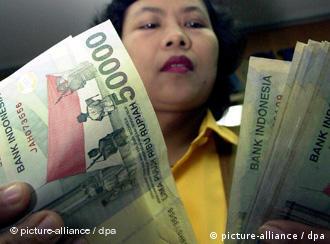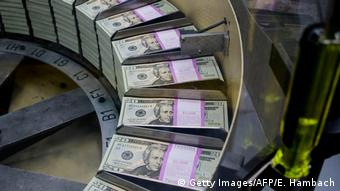Currency losses have shaken Turkey, and Argentina. Also, Asian emerging countries have been affected, but a new “Asia crisis” not experts.

The economic recovery in the US, a strong US Dollar and the tensions in the international trading system have drawn in the past few weeks, the economies of emerging countries strongly affected, as investors deposited their money increasingly in the United States.
In August, the inflow of foreign Portfolio investment in emerging countries, according to Figures from the industry Association IIF, only 2.2 billion dollars, compared to 13.7 billion in the previous month of July.
The us Central Bank will remain on your chosen course of monetary policy normalisation and a further two (moderate) interest rate hikes over the course of the rest of the year; at the same time, the financial situation seems to be in other economies in the world to have tense.

A strong Dollar, investors are attracted away from Asia
Thailand’s Resilience
In Asia, some countries were hard by the sell-off of assets in emerging countries, which was reflected in the sharp loss of value of their currencies against the US Dollar. There are fears that Asia could face a repeat of the financial crisis of 1997-98, which had rocked the Region at that time.
The Indonesian rupiah has fallen to its lowest level since the Asian crisis, it has lost since the beginning of the year, 9.2 per cent against the US Dollar. Even harder hit is the Indian rupee, the approximately twelve per cent lost against the US Dollar.
Other Asian currencies have proven to be resilient in the current crisis in the emerging countries, such as the Thai Baht. Experts see the reason in the large current account surplus of Thailand and its sufficient foreign exchange reserves.
Thailand’s current account surplus is estimated for this year to nine per cent of the total economic output of the country (GDP), in the past two years, this proportion was even in the double digits. The stability of the Baht in the current crisis environment is in stark contrast to 1997, when he lost about 50 percent of its value within a period of six months.

Not least, the tourism of Thailand’s Surplus in the current account
Problem Child Indonesia
India and Indonesia have large current-account deficits, i.e., the value of your Goods and services imports exceeds the value of the exports, which in turn weakens their currencies, and more vulnerable to fluctuations on the world markets. “The support of the national currency is becoming a top priority of the Indonesian Central Bank and the government,” writes Gareth Lander from the London analysis house of Capital Economics.
Indonesia’s Central Bank has been sold so far this year, almost ten percent of its foreign exchange reserves to support the rupee and the reserves currently amount to about 118 billion dollars, the lowest level since January of 2017. This can be financed according to the Bank, still imports over a period of six months, as well as the foreign debt of the government. Nevertheless, the situation shows the vulnerable financial Position of the Southeast Asian country.
“The Indonesian economy is characterized by some structural weaknesses,” said the Indonesian Economist and former Minister in the Cabinet of President Widodo, Rizal Ramli, the DW. Including, in particular, the high budget deficit and high public debt. Turning the interest rate screw through the Central Bank alone, without simultaneous structural reforms by the government, the Problem will not solve. Rather, to lead to a Further increase of bad loans and other problems in the financial institutions of the country, will Ex-the Minister Rizal Ramli warns.

To do all hands fully: Indonesia’s President Widodo and Indian Prime modes
Mixed Balance Sheet Of India
In India, the IMF expects for this year, with a larger current account deficit as Indonesia, it will roughly correspond to 2.6 of its GDP, last year it was 1.9 percent. Also, India’s budget deficit is one of the largest in Asia, in the second quarter (April-June) amounted to almost 63 billion US dollars. At the same time, India recorded in the same quarter of the year, which is related to the growth of 8.2 percent, as it has large foreign exchange reserves of around 400 billion US dollars.
Even if Asian currencies like the rupee in India and Indonesia, have not proved to be as resistant as the Thai Baht, so you don’t have to accept those blows which the currencies of Turkey and Argentina.
In order to support their currencies, and reduce Inflation, as mentioned some Asian countries, increases in interest rates. So the Central banks of the Philippines and India have increased the rates this year by 100 basis points (one percent) or 50 basis points. Observers believe that Indonesia and the Philippines will follow in the coming months, an extremely restrictive monetary policy in order to get the rapidly growing Inflation in the handle.

Just Southeast Asia needs to fear a dark shadow of protectionism
Asia today is different than in 1997
According to the view of Charlie Lay by Commerzbank, it is unlikely that the recent developments in the global currency markets will lead to a new crisis in Asia. “Companies in Asia are generally debt lower than in 1997 and also have less debt in dollars”,-emphasizes the expert for emerging countries compared to the DW. Also have improved the macro-economic Management, the exchange rates were more flexible, and most of the Asian economies recorded a current account surplus, despite the counter-examples are India and Indonesia.